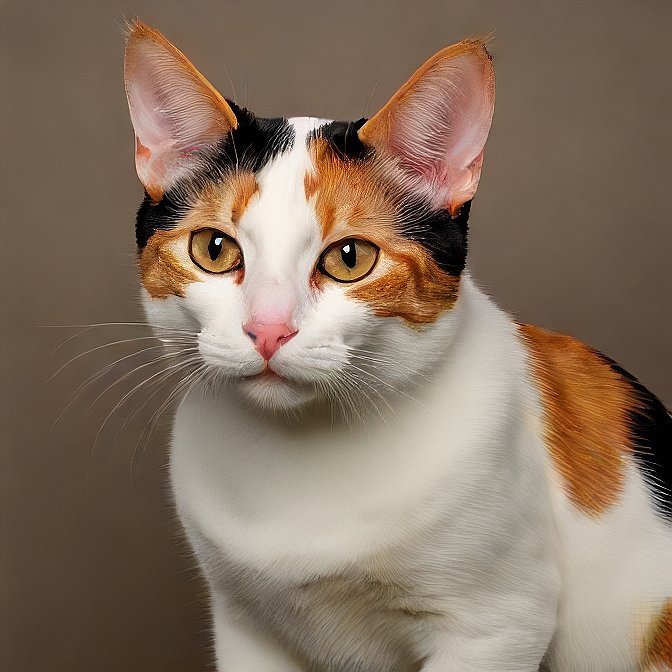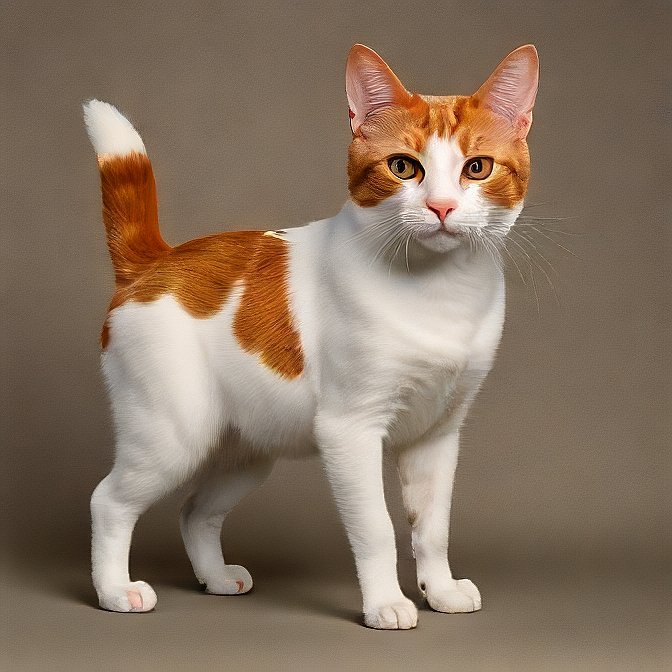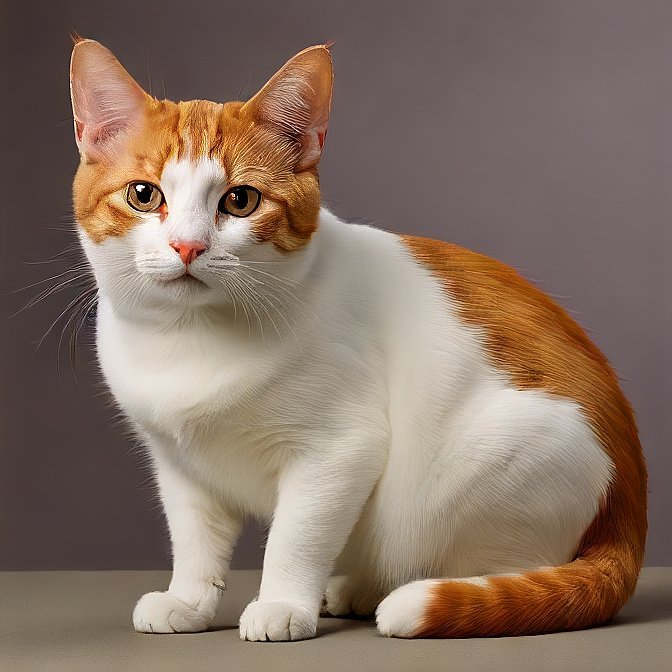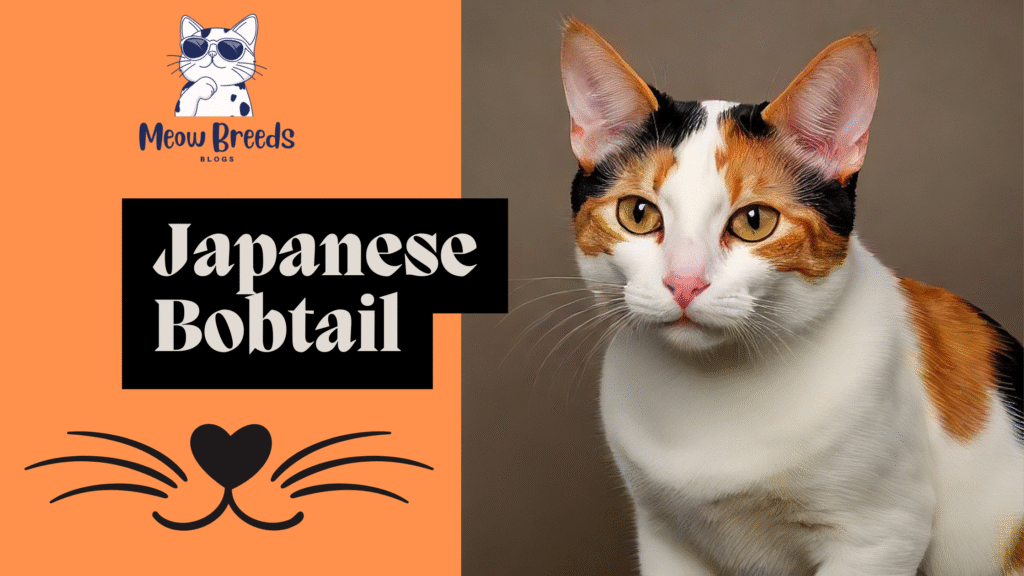Table of Contents
Introduction
Japanese Bobtail is the ancient and interesting breed with distinctive shortened and bunny-like tail and active character and significant cultural importance of the Japanese. This breed, with its entertaining personality and cute looks, has enthused the cat lovers across the globe and is still a favorite among the cat enthusiasts, who are in search of a lively, loving, and a different cat pet.

Ever wondered how the Japanese Bobtail came to existence, or thought about making it your new pet? This is its complete guide, which goes through all facets of history, temperament and grooming; all you need to know about this unique, attractive and adorable cat breed.
The Origins and Cultural History of the Japanese Bobtail
Ancient Roots in Japan
Centuries ago the Japanese Bobtail has existed in the Japanese culture. Cats with bobbed tails are reported in historical documentation, ancient scrolls, wood block prints and paintings over 1,000 years ago.
- First Mention: The breed is reported to have reached Japan in either the 6th century or not out of China, but out of Korea.
- Cultural Symbolism: Japanese Bobtails are a good luck-bringer, which is prosperous and cheerful.
- Maneki Neko (Beckoning Cat): The other easily known image of the breed is aptly referred to as Maneki Neko or the so-called lucky cat statue, which is as well known as it could be seen in the Japanese stores and restaurants. Its uplifted paw is gesturing to money.
Recognition as a Breed
- United States Introduction: United States The United States first imported a Japanese Bobtail during the late 1960s.
- Breed Recognition: Breed Recognition Although the United States Cat Fancier Association (USCA) registered this breed as a recognized breed back in 1976, the Cat Fanciers Association (CFA) registered this breed as a registered breed.
- International Appeal: Today this breed is not only popular in Japan, but some other regions of the world since this breed has rather peculiar appearance and bright character.
Physical Characteristics of the Japanese Bobtail
Japanese Bobtail stands out on first impression through its unusual tail and well-proportioned athletic body. The cats are graceful, elegant, and very expressive.
Size and Build
- Size: Small to medium
- Weight: Males typically weigh 7–10 pounds; females are slightly lighter
- Body: Muscular, long, and lean, with a refined but strong structure
- Legs: Long and slender, with the hind legs noticeably longer than the front legs
Tail: The Signature Trait
- Pom-Pom Appearance: The tail appears to be or resembles a puff ball pom-pom or bent corkscrew and can be referred to as bunny like.
- Unique to Each Cat: A signature feature of Japanese Bobtails is the absence of two identical tails because every tail is as different as a fingerprint.
- Genetic Trait: Due to a natural genetic mutation (not man-made), the bobbed tail is natural.
Coat and Colors
- Coat Types: There are short-haired and long-haired. Coat: silky and soft with little or no undercoat.
- Color Patterns: The most common such pattern is Mi-ke (pronounced mee-keh), a tri-colored pattern of white, black, and orange; this is particularly fortunate in the Japanese folklore.
- Other Colors: Other colors are found in bicolor, tabby, calico, solid, van, and without white.
Eyes
- Shape: Oval and big with expressivity.
- Color: It may be of any shade, some Japanese Bobtails even possess odd eyes (one blue, one gold that is regarded as very lucky).
Check Out: Himalayan Cat – Breed#17.
Personality and Temperament
The Japanese Bobtail is not all it looks to be. This breed is characterized by:
Highly Intelligent
- Eager to learn children with an inclination to puzzles and action toys
- In able to be taught tricks, even playing fetch
- Smart to clicker instruction and signals
Playful and Energetic
- Highly energetic- these cats like climbing, chasing, and running
- During their lives often termed kitten-like
- They are fond of taking part in family activities and being close to their humans
Vocal and Communicative
- With their musical voices and facial expressions of chirping, trilling, and meowing, calves are eminent in their musical subsets.
- symbolize moods or necessities by using an extensive variety of vocalization
Affectionate and Social
- Japanese Bobtails are very close to their family
- They are social, that is, they like being with people, and they usually make friends with other pets
- They do not prefer to hide or be a shy type of cat are adventurous and outgoing
Grooming and General Care

Japanese Bobtails are easy to take care of in terms of grooming, despite their fine looks.
Grooming Needs
- Short-Haired Variety: It does not need very much grooming; once a week brushing can do the job.
- Long-Haired Variety: Comb two to three times per week to keep the hair untangled
- Shedding: They don’t have a dense undercoat, and therefore their coat is easy to maintain, with light or moderate shedding
Bathing
- Unless the cat becomes very dirty, it only requires infrequent bathing
- Clean with a mild shampoo that is safe for cats, when needed arises
Nail and Ear Care
- Clip nails every two weeks
- Clean with a wet cloth or cotton ball, should it be necessary (do not use Q-tips in the ear canal)
Diet and Nutrition
A healthy and vigorous Japanese Bobtail needs the benefits of proper nutrition.
Dietary Needs
- Quality animal-based ingredients, high-protein diet
- Evenly proportioned meals that contain taurine among the essential amino acids in cats.
- Clean drinking water must be in abundance in every family
Feeding Schedule
- Serve age-related amounts: kitten, adult, or senior formulas
- It is possible to separate a number of meals into two per day to preserve energy and prevent overeating
Health and Lifespan
Japanese Bobtails are a really healthy breed, and this is due to the natural breed developed over a long history of Bobtails in Japan.
Common Health Issues
The breed does not have many genetic issues compared to other breeds. Nevertheless, watch out at all times when:
- Dental disease: Teeth brushing and dental review are used to keep the mouth healthy
- Obesity: These active cats become hardly overweight, unless overfed
- General illnesses: Standard bonds with any breed of checking by the vet are the main means of prevention
Lifespan
- On average, the lifespan of a Japanese Bobtail is 13-18 years, although with the necessary care, it may easily live until the end of the twenties.
Living Environment
Japanese Bobtails adjust to many living conditions that including apartments and homes.
Home Setup Tips
- Keep them physically and mentally challenged by providing cat trees, climbing machines, and cat toys
- Safe windows and balconies- they will be inquisitive and might also seek to go outside of the safety zone
- They prosper most when they are lavished with lots of love and interaction in their homes.
Compatibility with Children and Other Pets
Japanese Bobtails are ideal companions for families.
- Children: they are tender and fun-loving, and are hence the best playmates to respectful children
- Other Pets: Tend to mix well with other cats and, sometimes, other pets like dogs, provided that they have been socially exposed at an early age
They are of an outgoing, friendly disposition and are not as territorial as most other breeds.
Choosing a Japanese Bobtail

In case you want to invite a Japanese Bobtail into your life, the following ways may help.
Reputable Breeders
- Find breeders belonging to the associations, such as CFA or TICA
- Request health certificates and visit the cattery, where it is possible
- You should get ready to be on a waiting list because of the rarity of this breed outside Japan
Adoption and Rescue
- At some point, there are breed-specific rescues or cat rescue groups
- There is a certain extent to which the mixed-breed cats with bobbed tails might share with regard to their personalities
Adoption is an excellent place to provide a good home to a needy cat, as well as have the pleasure of its unusual beauty of breed.
Conclusion
Japanese Bobtail is an old, smart and gorgeous cat breed blending the playfulness with the culture and friendship. These cats with their famous pom-pom tail, impressive voices, and loving personalities can bring enormous joy to any family, single person, or even multi-pet family.
They are so beautiful to look at, as well as easy to groom and much-loved pets. The Japanese Bobtail may as well be the right fit for a cat seeking to get something a little out of the ordinary, an outgoing cat, and one that is incredibly bonded to its human companions.
For more info: Click Here.
FAQs
1. Are Japanese Bobtail cats endangered?
Yes, Japanese Bobtails do tend to be rather uncommon, in places foreign to Japan. Most often they can be found by either breeders or breed-specific rescue organizations.
2. Are Japanese Bobtails demanding?
They are people loving social cats that get along will people. Although they are not dogs that require a lot of attention, they do best in houses that do not leave them alone most of the time.
3. Are Japanese Bobtails yoked animals?
Absolutely. They are outgoing and usually get along well with other cats and even dogs, especially when introduced properly and at an early age.



